In 2023, Timișoara became the hub of arts and culture in Romania, following it being named the European Capital of Culture. This event brought a wave of funding and public attention unparalleled in the city’s history, with significant investments transforming the cultural landscape and having a profound impact on the independent arts scene.
The money channeled into culture marked a turning point, allowing artists and other cultural professionals to be paid for their work. Independent spaces, both private and state-owned, have benefited from funds to modernize themselves in line with European standards, one example being the Timișoara Art Museum: “We have invested over €2 million to transform the Timișoara National Art Museum, which is currently the only regional location that can house exhibits deemed as a treasure trove,” says Alin Nica, president of the Timiș County Council, with the museum benefiting from huge sums that have barely been spent by the end of the year.
For the first time, there was money “for all,” no longer did artists, galleries, museums, music, theatre, opera, and others have to fight for tiny grants.
In terms of visual art, the event succeeded in revitalizing the art scene to such an extent that the demand for exhibition and event space outstripped the available supply, as several organizations from around the country were invited to organize events in a city where there were too few venues for cultural events. This increased demand has led to a recognition of the importance of independent spaces (artist-run spaces) on the local scene, and they have benefited from recognition of their place in the development of local culture.
However, once the Capital Project was over, the question arose as to what would be left after this period of intense funding and interest. There were commitments to spend large sums of money by a certain date, with no alternative presented that this money could provide security for years to come. There are concerns and questions about plans to sustain the spaces created and run by artists and long-term survival. In addition, the need to build new state-supported independent studios and exhibition spaces for artists to operate without financial pressures has been discussed but has not come to fruition.
Discussions with the local independent scene in the pre-Timișoara Capital of Culture period revolved almost exclusively around their financial difficulties and how hard it is to maintain a space with their own expenses. A tinge of futility and bitterness accompanied the talk, yet always followed by a dash of energy to carry on with dozens of applications for funding, part or full-time jobs, and the artist’s professional life being sacrificed. Independent spaces, so-called “artist run-spaces” always suffer from a lack of continuity; it is impossible to try to encompass them ideologically or as a program, as they are hybrid spaces that self-govern according to their own rules, opening exhibitions when they want and can, when they or the artists who exhibit have money, when they win projects or finish their studio work so that they can offer it to others.
This article aims to explore Timișoara’s vibrant artist-run scene, highlighting its importance and challenges in the wider cultural context. It is crucial to find ways in which these independent spaces can continue to be supported and encouraged, as their activities benefit the local artistic community and cultural diversity in general.
The concept of artist-run is one that emerged recently in the Romanian scene, after 2010, through importing jargon used in international texts, once Romania managed after the ‘90s to “get up to date” with international contemporary art, going through a transition period in the ‘90s and early 2000s. This manifested itself in: the recovery of the ‘60s and ‘80s art; the first attempts and contacts with new media art, conceptual or photographic; the emergence of the first hybrid exhibition spaces, neither artist-run, nor galleries, nor project centers; the introduction of funds to which artists apply and must be taught to present themselves through biographies, portfolios, CVs.
With a long history in Timișoara, the Fine Arts High School was the one that provided the cultural framework for the training of artists in the absence of a university type of educational institution. Here, future generations of artists studied art academically, almost at the level of an Art School, and with the arrival of new teachers at the end of the ‘50s, contemporaneity and experimentation became the norm. “In 1957, the first graduates of the newly founded Fine Arts Institutes in Cluj and Bucharest arrived in Timișoara – Aurel Breilean, Victor Gaga, Gabriel Popa, Romul Nuțiu, and Octavian Maxim, series expanded in 1962 with the arrival at the Fine Arts High School of Constantin Flondor, Karin and Ștefan Bertalan, Karola Fritz, Bela Szakáts, joined in the following years by Viorel Toma, Carol David, Rodica Banciu, Adriana Oancea, Ioan Perciun, Elena Tulcan, and others. All these young people were already trained with a different mindset, closer to the contemporary world so, through their work as well as their theoretical efforts, a breath of fresh air came into the school… Being open to the new and thirsting for information, the group of young teachers shared the same passion with the students; specialist meetings were held regularly in the high school, where they discussed various topics that were highly relevant at the time, such as information aesthetics (Max Bense) or entropy. The interest in the complexity of interdisciplinary issues and in different fields of study was fueled by the bionics course led by Professor Eduard Pamfil… Eager to change the overly academic education system and bring it closer to contemporary art, the group of teachers was planning to transform the Fine Arts High School in Timișoara into an experimental high school focused on industrial aesthetics, where design would be introduced as a study topic.”[1]
In 1960, the Faculty of Visual Arts was established within the Pedagogical Institute of Timișoara with the aim of training future middle-level educators while the lecturers tried to offer a variety of subjects that would inspire them to become artists, and many of them did, to the pride of the professors. In 1970, the institution was renamed the Faculty of Drawing at the University of Timișoara, and, in 1979, it was closed down due to political reasons although, together with the Art High School, it was a source of creativity that changed Timișoara and offered important artists; and now… “In the mid-60s and early ’70s, the artistic climate in Timișoara was full of effervescence: apart from the experimental group 111 and later the Sigma group, other groups of artists had appeared in the city, using different visual languages ranging from constructivism to the abstract and action painting. Painters, in particular, were concerned with the transgression of two-dimensionality and the visual association between painting and object.”[2] The local community would suffer until 1990, when the Faculty of Arts was reopened as part of the Faculty of Philology at West University.
The scarcity of admission places at the three art faculties in Romania (Cluj, Iași, and Bucharest) during the communist period and the lack of access to information about Western art – one could illegally get hold of catalogs or a tape or two brought by friends – made the early ’90s a realm of experimentation and naivety. With the birth of the Soros Centre, the new media outreach and the first international group exhibitions, and the increasing amount of art university graduates and travel through university exchange programs, we also see the first initiatives to organize and improvise exhibition spaces in the country and locally in Timișoara for graduates, who have nowhere else to exhibit except in UAP galleries for a fee.
The first private gallery in Romania, in addition to the UAP galleries, is established in Timișoara by Adela Dumitrescu: Galeria First. This gallery operated before the Pygmalion Gallery between 1992-1998 in what is today called Casa Artelor. Here, several solo exhibitions with local artists, and not only, took place: Doina Valeria Mihăilescu, Rudolf Kocsis, Suzana Fântânariu, Constantin Răducan, Horia Bernea, Ștefan Câlția, Ion Grigorescu and in 1994 a very important Paul Neagu solo show was opened by Ileana Pintilie.
In 1994 Galleria 28 opened in Timișoara, a sort of “home-gallery,” in the basement of a couple of engineers and art lovers, Ovidiu Bădescu and Marie-Jeanne Bădescu (1958-2019) – who was also essayist and prose writer although a graduate of the Polytechnic Institute “Traian Vuia” in Timișoara. From the very beginning, they were interested in the neo-Byzantine and Orthodox art movement, represented by the Prolog group and, then, the Noima group. The couple collaborated in particular with the artists Constantin Flondor and Paul Gherasim, but they also displayed in their home Ion Grigorescu, Vasile Gorduz, Paul Neagu, Sorin Dumitrescu, Mihai Sârbulescu and Horea Paștina, Horea Mihai, Peter Jecza, Silviu Orăvtzan, Lia Perjovschi, Ion Dumitriu, Simion Crăciun, Silvia Radu, Dan Palade, Stela Lie, Andreea Palade Flondor, Adriana Lucaciu, Ana Adam, Doina Mihăilescu, Sorin Vreme, Laci Mathias, Sorin Scurtulescu, Daniel Ursachi, Sorin Neamțu, Iosif Tași, Ciprian Bodea, George Mircea, Cosmin Frunteș, Dragoș Constantin, etc. After the closure of the Catacomba gallery in Bucharest, Sorin Dumitrescu joined the team and “curated” the exhibition program through the Anastasia Foundation for several years. The gallery is still running now, with a high frequency of events.

Galleria 28, Exhibition of the group Noima, 2019
Temporary events such as festivals and pop-up actions started to arise sporadically as the “generation of tomorrow” was preparing in the new art faculty, which now offered a larger number of seats and would represent after 2010 the more mature and diverse generation of galleriests, coordinators of artist-run spaces, NGOs.
The Zona performance festival, coordinated by Ileana Pintilie and held from 1992 to 2002 in different places in Timișoara, involved for the first time a generation of students participating as artists or volunteers in a complex and international event, with conferences, experimental actions where nudity and the body were explored through performance or actions in public space.
“The Zona1 performance festival was born after 1990, motivated to a large extent by the social and political context in Romania at that time and fueled by the idea of the existence of a whole region – Eastern Europe or ‘unknown’ Europe, beyond the Iron Curtain – facing similar problems to ours. I discovered, and it seemed obvious to me, that this space, this ‘zone’ which had suffered from the vicissitudes of communism and the isolation imposed by regimes directed from Moscow, had a common identity, neglected for decades due to the lack of interregional contacts… Due to the number of participants and the complexity of the approved projects, the Zona Festival soon became regionally recognized, going beyond the rather narrow framework of the Romanian artistic context… By the last edition, in 2002, the situation of the arts, both in the country and internationally, had changed significantly. Firstly, thanks to the facilitation of travel and cultural exchanges, Romanian artists were increasingly involved in international projects. Secondly, the return to painting and the taste for commercialism led many of the participants in the country to give up direct, physical expression for good..”[3]
In 2002, Alexandru Patatics, a video and multimedia artist from Timișoara and lecturer at the Faculty of Arts in Timișoara, took over a small space of 2 by 2 meters in the perimeter of the Bastion for 11 days (March 11-16 and 18-22) and invited his students to participate with a different site-specific performance every evening, starting at 7 PM, during the event “Night Shot Stories.” Each daily event was documented so that the next day, it could be part of the follow-up activity in the form of photos. The guest artists included: Alin Rotariu, Csaki Istvan, Ema Kozma, Laura Borotea, Marusinsky Andrea, Barabas Vetro and Tamas Hejja, Aura Bălănescu, Anca Benera & Arnold Estefan, Irina Botea, Levente Kozma, Erika Benedek, Filep Szilard.
This short series of video installation, music and movement interventions, as well as the Zona Festival, is a prelude and paved the way for the first video art and experimental music festival in Timișoara: SIMULTAN Festival, organized by former participants or collaborators. Started in 2005 and pioneered by Levente Kozma, together with fellow artists Antal Huba, Alin Rotariu, Sorin Vreme, and Szilárd Szőke, the festival continues to be the most important event of its kind in Romania, becoming more and more noticeable on the international scene.
In the early 2000s, the first non-commercial initiative led by Péter Jecza was launched in in the newly built house to promote his own work and that of his friends and members of his generation (although Sorina Jecza, his wife, admits that this was not a conscious goal at first, but the joy of sharing with friends), through an undefined program and informal gatherings in the form of music recitals, visual art presentations, book clubs, and book launches.
The Jecza Gallery officially opened under the name Triade Gallery for the first time in 2002 and remained in the garage of the house until 2011. Until 2009, when he died, Péter was the curator, host, and event initiator; then, Sorina Jecza, continued his work of supporting their friends and local artists through the gallery and the Triade Foundation.
Although it has since been transformed into a commercial gallery, built specifically for this purpose, it remains a deeply intimate space that has always been in the proximity of the house, linked to it today by a simple hallway. And if you want to move from the cold, formal space of the gallery into the warmth of the house that has become a quasi-museum dedicated to Péter, you can just “walk in.” Even the sculpture park, started in 2003 in front of the house, includes works by artists that were on display in the garage exhibitions.
The beginnings were informal, the first event being a musical one in 1996, as soon as they moved into their new house on the then outskirts of Timișoara after a violinist family friend asked them to rehearse in their home with the Voces quartet, which was in town. As they wanted their close friends to be able to enjoy this opportunity, they organized a small recital. After that, meetings started to become more frequent and the group of friends larger, and the chance to meet was given by dinners and themed parties, accompanied by a little art, a little music. Sorina confesses that it was more a matter of “intellectual and cultural socialization, conviviality, through which people learned how to get closer to each other. It was a institution of dreams.” Thus, a kind of first public coalesced in this “artist’s house,” whose living rooms gradually became too cramped for all the artists who wanted to bring their work to be seen and their concerts to be heard.

The first year of Triade Gallery in Jecza`S Family garage, 2001. The exhibition “Actuality of Brancuși’s Sculpture”
It all officially culminated in the catalog Sorina had prepared in 2000 about Péter’s work. Searching for a publisher to publish the book, they were unable to find one that would allow them the freedom to design the catalog as the artist had envisioned it. So, they decided together to create a foundation, launched along with the release of the catalog: the Triade Foundation, and with it, the gallery designed by a fellow architect Radu Mihăilescu, in the garage of the house. Now the program became more “serious” and assertive, i.e. the promotion of Peter’s contemporaries (the ’60s, ’70s generation) through the publication of monographic catalogs and the inventory of their works, the organization of solo exhibitions, and gradually starting the promotion of young sculptors through a separate program, but still Péter was the “spiritual mentor” of the space. The artists, although established in traditional environments, in their 40s and 50s at the time, did not have the dexterity necessary for self-promotion, so the Foundation assumed this role for Péter’s generation, his friends, with the help of the first funding from the Timișoara City Council. And so Timișoara was a step ahead when the recovering of these generations began at a national level, with monographic catalogs about local artists published by the Foundation in the project Maeștrii Timișoarei / “Masters of Timișoara,” most of them launched following solo exhibitions organized in the gallery. This took place at a time when the Timișoara Art Museum had not yet been opened (it opened in 2006 in the Baroque Palace), and there were not many local exhibition offers.
Between 2001 and 2006, Maria Crista, Anca Gyemant, and Rodica Tache, former colleagues at the Painting Department of the Faculty of Arts in Timișoara, opened the h.arta space in a former industrial hall in Timișoara, where they organized exhibitions, workshops, and conferences. The space was offered for free, but the girls had to pay for the utilities and the production of the events by applying for public or private funds. h.arta was more than a space; it was an artistic project, where art was used primarily as an instrument of criticism and education, analyzing the power dynamics and everyday life. Within the context of the neo-orthodox art being recovered in the early 2000s, the three artists were trying to question what contemporary art was and the capitalist discourse formed by joining the EU and disavowing communist history. The space was defined as feminist, queer, anti-capitalist, and anti-speciesist, with a strong pedagogical and political component, being a place of gathering, discussion, and collaboration. The space would close in 2006 but continue in other pop-up locations with a greater focus on political art for shorter periods: Project Space in Bucharest in 2007 and then Feminisme space between 2008 and 2009. The artists continue to practice their art through teaching at the intersection of art and life, trying to incorporate their ideas and practices into the way they live their lives and relate to students and future generations.
The scene began to change after 2010, when young graduates of the Faculty of Arts (studies were 6 years long) wanted to exhibit and had nowhere to go. Already, the 3 galleries in the city (First, Galleria 28 and Jecza) as well as the new Art Museum had a focus on exhibiting more established artists and recovering works, and young artists felt the need for spaces where they could experiment, play, gather, without too much pressure, as they were still learning where to place themselves. So friends are meeting again in apartments, at dinners and opening their homes or studios for discussions and friends.
In 2011, Sergiu Sas, an engineer by profession, decided to open his house to artist friends and to flirt with art in various forms. It was all more or less a game; they didn’t take themselves too seriously, and the project – alkmy lab – lasted until 2014. The first apartment, a 40 square meters studio, opened with a hybrid event with artist Rareș Moldovan (at the time he called himself Neuro, one of the future coordinators of Nava C2 space) exhibiting some prints, Levente Kozma bringing some modified home appliances, Cătălin the Mathematician doing a mathematical demonstration with a marker on the door of the room scientifically proving the existence of karma and Selfmademusic playing music. About 30 people came, future artists and venue coordinators, and the first core of the independent scene began to coalesce. Then things developed naturally; the friends expressed a desire to exhibit more in the apartment-gallery and to get together to party. No event is just an “exhibition,” music always added to the atmosphere, and the culinary side was never absent; people cooked and brought food, and this component would accompany future exhibitions in the next two spaces Sergiu would manage.

ALKMYLAB SPACE, ARTIST VLAD CADÂR, WORK の生活
However, the apartment gradually became too cluttered with furniture, and the need for privacy and an exhibition space different from the “sleeping” space put an end to this project, which would later be resurrected in Cristina Luchici’s empty apartment.
Ten years after the Jecza Gallery’s culture- and friendship-generating dinners, the concept of a “home gallery” is breaking new ground. For both Péter and Sergiu Sas, it is important to echo their contemporary times, to exhibit and collaborate with their generation, the close friends gathering for dinners and discussions in the living room. The intimacy of one’s own home, as with Gallery 28, is the motor generator for a community close to the founders art interests. In the case of Péter Jecza we see the promoting of his generation that later became the “Masters of Timișoara,” the generation of the ‘60s and ‘70s, a generation that did not yet know what the phenomenon of self-promotion and historicization implied and that exhibited strictly in the UAP galleries, in the case of the two founding engineers of Galleria 28 we see that the works exhibited in their house reflect their own intimate love for art and artists close to a shared spiritual conception. But as 2011, when Jecza Gallery and Galleria 28 are already becoming more serious galleries, close to the western white-cube concept (although both continue to remain in the founders’ homes), the alkmylab space is a new reflection of the 2010 generation. With electronic music and audio-video experiments, attended by members and participants of the Simultan festival, young art graduates, the meetings reflected a paradigm shift that we would encounter from then on the local scene towards new media art, interventions, performances, gatherings where people critically discuss the current social situation (following the formula of future conferences today).
Sergiu Sas resumed the idea of an exhibition space only in 2018, together with Mimi Ciora, Cristina Luchici, and Vlad Cadâr (coordinator of the Tamtam space), an idea prepared by successive meetings in Cristina’s apartment since 2017. The empty apartment allowed for a more “official” exhibition, albeit the kitchen integrated into the apartment carried on the “tradition” that started in the alkmylab space and later continued in the Indecis space. The visiting schedule was appointment-based, as there was no funding for it to be permanent, and events were becoming more frequent and national, as artists would want to exhibit in Timișoara but still not having many alternatives. By the end of 2019, when it closed, 2/2 was gathering a core group of artists and a steady audience to accompany the events and guests that started to come from other cities.

2/2 SPACE , “HARABABURA” EXHIBITION, ARTIST SORINA VAZELINA
In 2020, Mimi and Sergiu decided to rent together with their friend Florin Fâra an apartment with a spacious terrace in the center of Timișoara with their own funds, where the new artist-run Indecis and The Secret Garden Bookshop (a platform started in 2012 to encourage author, art history and theory books, zines and other materials printed by local artists) opened. The space was opened before the pandemic, so once the pandemic hit, they had to organize fewer events with a smaller audience, yet thanks to the outdoor terrace, they were able to continue their activities despite the restrictions. Once the pandemic was over, the space became a very active one, already nationally recognized, and events were held frequently and with such a large audience that it became overcrowded. Thanks to the establishment of an NGO, they could apply for projects to support the space and pay for rent, utilities, artists, and carry on. However, at the end of 2023, they are forced to move and look for another space, their structure changes and artist Gavril Pop joins the “undecided” group. At the time of writing, the final European Capital events are being held in pop-up spaces around the city, waiting for a new space.

INDECIS SPACE, “ACTIVITIES” EXHIBITION, ARTIST DAN PERJOVSCHI
By going through these three spaces managed by Sergiu Sas with different collaborators in their spare time, we can follow the transformation of a space into an independent one, which acquired legal status and started to be supported by public funding, and that now has a clearer curatorial agenda, although still based on the friendships and interests of the coordinating artists, who are also curators of the space. Different from Jecza Gallery, which later became a commercial white cube, the Indecis space is more like a project center with a dominant educational and process-based dimension.
In 2010, the artist Vlad Cadâr opened Tam Tam after managing to sell some works to pay the rent for two months for a space that lasted until 2016, and then he tried again with Mimi Ciora, Cristina Luchici, and Sergiu Sas to take charge on Space 2/2 in 2018.
The TamTam space was an experimental artists’ studio space, full of interventions on all the walls and furniture, with writing, graffiti, drawings, where concerts were happening, films were being screened almost weekly (FilmoTecă), and mostly queer-themed parties were happening, creating a safe space needed in town. Studios were constantly being vacated, more were acquired over the years, and other artists were welcomed, creating a fluid, diverse community that was always participating in organizing events or just gathering around. Again, the community was gathering around tables, cooking, and even started brewing their own beer. TamTam was responding to a need of the time among artists nationally, as we know, in 2009, Fabrica de Pensule opened in Cluj around artists’ studios. The difference between the two spaces was that the latter was gradually moving towards “commercial” goals, creating galleries but also a way to relate to the sales-oriented spaces, while TamTam, in its short three years of existence, had a squatting aura even though they were paying rent, with coworking studios, shared kitchens and events geared towards the public to bring them to spend time together and not for sale.

TAMTAM SPACE, 2015
We now could find in Bucharest the Malmaison and Scânteia studios as well as the Centrul de Interes in Cluj that continue the formula of Fabrica de Pensule, while something similar to TamTam we could only see maybe at ArtHub in Bucharest, which, however, has long given up on the idea of artists’ studios with which it started and remains a safe space that works with the queer and Roma community and offers a place for experimentation and development in a horizontal and non-hierarchical way.
In 2016, the studios were being demolished and the team announced in a typical group post: “Grieving family, thirsty gathering, brothers, cats, sisters and more.
On the bells in olden times, it said ‘The living I call, the dead I help, lightning breaks, let us make tamtam.’”
Today, our bells weep, the hoof is without horseshoe, and the dog without garlic because they carry to the grave rubble that until yesterday was in our midst, a place that was dear to us and that we all cherished and without which we can still live in peace.
It was a good home, honest, warm, sometimes even cold. It had children, girls, boys, puppies, cats, and other critters that it gathered with difficulty, picked them up from the ground to make them grown people and to get them each to their homes.
It was a housekeeper: sheep, goats, cows, concerts, exhibitions, presentations, releases, workshops, parties, performances, screenings, audiotheques, cooking and building evenings, horses, pigs, birds, etc., so much so that its yard was packed even though it was big.
We conclude the Tamtam project after three years, thank you to everyone who participated and helped us in any way, and we are looking forward to having you join us in the next projects.”
In 2013, artists Livia Coloji, Răzvan Cornici, and Ana Kun, friends since 8th grade and graduates of the Faculty of Arts Timișoara in 2002, organize a fair for selling zine and other art objects in a friend’s garage and realize that they can no longer work in their bedroom or kitchen. So they found a two-room space they could afford in Timișoara’s Libertății square: “a bigger one where we all stay in winter to save on electricity, a smaller one called the fridge where there is also the kitchen and the bathroom that we don’t heat. It’s not so hard, especially since we decided not to make fire anymore (i.e. not to break our backs carrying 10 kilos of pellets a day). From the very beginning, we wanted the space to remain a studio, but to do an event every now and then where we invite other people, artists or not.” shares Balamuc. In 2023, Gavril Pop and Lucian Barbu joined the group following a residency for which the artists had to organize nine events in the space. Since this year, Gavril has participated in the coordination of two spaces: Balamuc and Indecis, and everything runs naturally through occasional meetings and participation in projects. Balamuc is more like a personal studio, which sometimes organizes cherished events with friends without financial pressure; the coordinators don’t want to feel the pressure that comes with public funding. This problem is often found in the cultural scene, where the only resources to fund artist-run spaces or pop-up projects being complicated applications for local, national, or international funding. Artists take on legal forms to access funds and become secretaries, accountants, managers, drivers, and carpenters, exhausted from writing and accounting for projects. However, since artists in Romania cannot apply directly for funding, this has become a reality for many spaces and artists who want to survive.

BALAMUC SPACE, “NORMA D`LUX” EXHIBITION, 2016
“We do not and will not have white cube conditions. It is a self-funded space. It is not an NGO. Our projects are not very expensive and, as such, do not represent a financial burden. From the very beginning, we created Balamuc as a group and support space for us, a friendship we extended this year (2023) to Lucian and Gavril. We want to avoid subjecting the group to the stress of funding applications, eventful programs, and high production costs. For this residency, we tried to work as much as possible with what was already in the space and use the funds for food and accommodation. It’s a system that works for us and might not work for others. It’s also a system where everyone sees to their own practice, artistic or otherwise. In short, it’s pretty easy.”[4]
Balamuc artists have their own pursuits outside the space, and the projects coordinated inside the studio are based on personal, relational practices, on “the experience of getting to know each other, sitting around, having a cup of tea or coffee, eating something good, vegan. The tours we take in the space are conversational. We don’t attach labels.” Without setting out to organize events, they occur as an extension of their own artistic interests and in harmony with values in line with a sense of community, vegan and ethical practices, with no particular agenda, a “hustle and bustle” where anything goes, anytime.
Also in 2013, a group of friends and fellow students at the Faculty of Arts in Timișoara: Mihai Toth, Adrian Popa, David Iancu, and Paul Feier (in the meantime, he changed his name to Paul Baraka Marat) squatted a space discovered by chance near the Faculty of Arts in Timișoara, which in time would become Baraka. These young people don’t even understand what an artist-run space is, as the concept is not yet popular locally. They were only familiar with the situation at Fabrica de Pensule in Cluj — where several artists have gathered and found a larger space suitable for studios — and were not interested in offering their space to organize events; they just want a space to work, experiment, and discover themselves, a proper studio.

BARAKA SPACE 2016. PHOTO CREDIT: MIHAI TOTH
Until 2019, the space had no electricity or other utilities, and the students couldn’t even afford to fix it up. Later they found out that it belonged to the Faculty of Arts itself, which over the years has allowed them to stay in the space after they improved it.
Until 2017, the studio was just a private space where colleagues, art students, artists, and other art lovers gathered for discussions and studio visits. Artists try to discover what is happening with contemporary art and how they position themselves in this context. In 2017, the first “external” collaboration took place, namely the exhibition Sculptură 000 / “Sculpture 000” organized by Marius Leonte through the Instalart Association, following which a new collaboration with the construction company Constructim was initiated. Through this collaboration, the first sanitary group was created.
As of 2019, only two of the four artists remained: Mihai Toth and Paul Baraka, with Adrian and David moving to Germany. Mihai was the one who assumed more the role of curator/coordinator of the space; Paul continued to work in the studio as an artist, considering the studio his home, thus connecting with the space in a very intimate way.
Since 2020, a residency program for emerging artists has been initiated, providing a range of resources such as studio space, tools, and exhibition space, as well as a mentoring system and connection to the local art scene. Also in 2020, the Baraka Cultural Association was born, used by Mihai Toth both for personal projects as well as collaborations with local organizations, as the artist was interested in developing educational projects with school and university students and is currently trying to develop a new artist-run space in a factory in Timișoara while the Baraka space is rather used by Paul for studio work.

BARAKA ARTIST-RUN SPACE, MEZZANINE IN THE RESIDENCE SPACE, 2023
Balamuc and Baraka are two eloquent examples of artist-run spaces / artists’ studios, which are in constant transformation in close relation with the artists’ practice, being an extension of their interests and artistic programs are carried out when they have time, with a more relaxed pace, which depends on an internal synchronization and not on external pressures.
In 2017, the former AZUR oil, paint, and soap factory at Splaiul Peneș Curcanul 3 in Timișoara leased various spaces, and artist Alex Boca was looking for a studio. Alex, a recent graduate of the Photo-Video department in 2016 and a Master’s student in the Sculpture department at the Faculty of Arts and Design in Timișoara, spent the first part of 2017 on study trips to Paris and Vincennes Saint-Denis. In October 2017, he rented two spaces at AZUR; one continued to be his studio but also his home for the first two years, and the larger one has been set up to become the artist-run space Lapsus, which hosts exhibitions, fairs, discussions, and screenings.
There were two other artists and a music studio in the building, but “it wasn’t Fabrica de Pensule at all,” as the artist admits, and it didn’t become so, even though he gathered other artist friends along the way. Also in 2018, artists Livia Mateiaș and Marius Jurca rented a studio together with Lapsus, which they transformed now and then into an exhibition space with a focus on digital art called DIGITAL:CANVAS\. Aura Bălăenescu also moved independently in 2019, and then Carina Bălan. In 2020, Alex brings Bogdan Tomșa and Petrică Ștefan, then Ana Maria Szöllösi with studios in the building. He met Bogdan and Petrică in the Avantpost group, formed in 2014 by various members practicing a transdisciplinary type of art somewhere between art, technology, architecture, and technical sciences. The group exhibits in pop-up spaces around the city with fluid frequency and composition.
A heterogeneous community started to form at AZUR, but without any common goal or shared identity, more like friends working individually. With open-minded and understanding management of the factory, artists continue in these spaces paying decent rents, although FABER, an alliance of creative entrepreneurs, architects, and business people who bought part of the AZUR factory and refurbished it, opened in the courtyard in 2020. This part of the building is mainly dedicated to the creative industries, a business-like initiative that often brings the problem of gentrification and rising rent prices, but the artists are hanging on for now, and this year, several events part of Timișoara Capital of Culture have been developed on the FABER premises.
The exhibitions at Lapsus began by inviting local artists who had not had the chance to exhibit due to lack of space. However, the invitation then grew into collective projects to anyone who came up with proposals and then continued with formal open calls, where the criteria are “more objective” and juried, but they are still organized on a friendship basis, organically, between the participants of the space’s events and when time allowed. “I set up juries when needed, made decisions myself or accepted with blind trust proposals that came to me and never regretted a collaboration,” Alex Boca tells us.

LAPSUS SPACE, “BLACK FRIDAY ART SALE” EVENT
Another specific activity developed on several occasions is the organization of accessible art fairs, which is part of a national “new trend” that we find in Cluj and Bucharest. Artists take their art into their own hands and no longer wait for collaborations with galleries that don’t come, or when they do, they are bound by abusive contracts that tie them down from selling under their own arrangements and offering a percentage to galleries that don’t care about their career at all. We have seen in recent years this managerial development of the artist either towards applying for government funding or by promoting online and holding fairs where they sell items more accessible to the general public. Thus, artists, through these fairs, try to come together to bring visibility and stop waiting to sell important works at high prices, such as sculptures or paintings, and in the meantime, try to sell works at modest prices, such as prints, sketches, jewelry, greeting cards, diaries, custom clothes, etc. In Timișoara, the Balamuc space has organized smaller events of this type dedicated to the artists in the group and friends, focused on fanzines, and we also find objects made by local artists at The Secret Garden space. But Lapsus wanted to create a larger event, with an exhibition that is not a gallery but more of a studio, where sketches from student years or various attempts are introduced to a diverse audience who want to bring home accessible yet original work.
“The idea for art fairs came to me out of a need for more physical space but also out of a frustration that part of my art sits unseen. I noticed how work kept piling up in friends’ studios, so I asked them to tell me what they could easily part with so we could sell it at modest prices. Then came the idea of an exhibition in Lapsus with the walls full with all these works, sketches, visual experiments, or themes from student days. As Black Friday approached, the stars aligned, and we did the first event on November 26th, 2021 – the Black Friday Art Sale. So many people came, and they were all asking to buy one work or another. I walked around Lapsus that evening with a ladder to keep descend works off the walls.
There is a lot of work that comes out of being a university student or from the first two years of artists’ “freedom,” works which often go to waste because there is the pressure that you as an artist should only exhibit your best, what is excellent and validated by curators or important institutions. That’s a problem in our culture because we only want to be told what’s good by who we think has authority, so we don’t subject ourselves to the public test. Overall, this elitist attitude blocks communication with the public and makes the artist tense, and then they complain that no one is exhibiting them. In my experience as a curator, I have tried to be critical of what we want and offer, but I have had an open attitude towards art and artists.”
Also in 2017, in another factory in Timișoara: Andrea Wolfer, Gabriel Amza, and Zorislav Stojanovic brought to fruition the idea they had in 2016 to open a space, the Center for Diverse Arts Misc, dedicated in particular to theatre and photography in the former Cigarette Factory, which had the potential to become a true cultural space. After Timișoara won the title of European Capital of Culture 2021 in 2016, later postponed to 2023, the entire community in Timișoara hoped that this factory would be rehabilitated and made available to the cultural sector in the form of studios, galleries, dance and theatre centers, but it did not happen. “Today, I understand why. It’s a building managed by an insolvent private company, which is holding onto that building until it depreciates, and then it will probably be demolished, and the land underneath it put up for sale. To this day, the building is a taboo subject for the local authorities, which we think is a great pity and even a missed opportunity to invest heavily in the future generations who, in our opinion, give the city its glow and vibrancy. The rent for the space we managed was over €700 for the summer time, excluding utilities. We paid it out of our own pocket,” Andrea confesses.
The space lasted a year and a half. Andrea with a background in theater and being a theater pedagogue, and the boys working in photojournalism, dreamed of the space being open to artistic and pedagogical experimentation, so they rented 270 square meters and formed an NGO to run projects. The founders dreamed of finding a formula whereby guest artists and collaborators could give lectures, conferences, and theater plays that could generate income that would cover the fairly high rent.
With a self-taught practice focusing on research and the exchange of ideas, the young team developed several events in collaboration with various local institutions such as Art Encounters, the German State Theater in Timișoara, the German Cultural Center, the Polish Institute, The Secret Garden, the Community Foundation and many others. But after a very short time, it shut down due to a lack of money for rent and external pressures to leave the space following very public events with a large audience frequenting the factory. “We were left penniless and disillusioned by the disinterest of the authorities in this building with enormous potential and by the then TM2021 team for the lack of vision towards a project with enormous long-term potential for Timișoara’s artists to find spaces for creation and co-creation to ensure the cultural effervescence of the city, which a large part of Timișoara’s public and visitors and tourists can enjoy in 2023.” The space had pinned their hopes on the possibility of creating a true cultural hub in the factory and hoped that the new title of European Capital would help the building to be redeveloped.
In 2017, Marius Jurca, a digital and new-media artist, and Livia Mateiaș rented a studio in the AZUR factory, becoming neighbors of Lapsus. After not even three months, they started organizing events with a focus on digital art, as Marius owned several pieces of equipment he had used in his previous projects and decided to make them available to other artists who wanted to exhibit digital art in Timișoara but didn’t have a place. Thus DIGITAL:CANVAS\ was born, a space used by artists as a studio and offered to other artists for short periods like one-day shows or a weekend. To maintain the space, when they didn’t win any projects, the two relied on a modest fee to run other artists’ events.

DIGITAL:CANVAS\ SPACE
Also in 2018, Rareș Moldovan, Ilie Duță and Dorian Bolca, students from the Sculpture department at the Faculty of Arts, manage to occupy the C2 space (the former laundry room of the Timișoara Student Culture House of 4×7 sqm) and gradually expand into the building occupying other empty rooms and the garden to use it to organize various events: open-air cinema, concerts, poetry quizzes, theater, exhibitions, workshops. This is how the new alternative culture space Nava C2 was born.
Initially, the space was set up as a sculpture space for the group of friends, and then they started to organize their own and their friends’ exhibitions step by step, not being anything public, wanting to keep an underground feel. Events were organized according to the artists’ free time, especially as the space became more and more popular, and they received requests to organize external events for the friend groups. The space is self-funded with symbolic help from the CCS, as the artists were unwilling to spend their time on project applications, just like the Balamuc artists.

NAVA C2 SPACE, Wonderful Garden 2019
Through this study, which isn’t intended to be exhaustive, I have tried to form a basis on which new individual and group stories can be built. Artist-supported spaces require dedication and attempts to find the funds to survive, and these stories often remain forgotten when the spaces close but also remain obscure, hidden behind the success of the organized opening. We visit artist-supported spaces to congratulate them on their events without asking how they pay their rent, how they’ve survived for so many years, and what it’s like to have the exhibition space in your own garage or living room.
In recent years, we have seen a shift towards pop-up events based on funds and fixed time periods. Artists, forced to establish legal status to apply for funding and organize exhibitions, discussions, conferences, and workshops that revolve around the expense calendar, have neither the strength, money, and determination to support the space to hold events outside of winning projects, which are a lottery, not providing consistent and long-term support. That’s why it’s important to appreciate artists who sacrifice their studio practice, their private money, their time, and sometimes their home. In the context of the grandiose Timișoara 2023 European Capital of Culture event, which is, in fact, a one-year fixed period funding program that will be settled in December 2023, we must appreciate the cultural actors who have been there before, setting up the scene and who will stay after, paying rent and utilities without any help.
* This article was made possible by funding from Energy! Artistic Creation Grants, awarded by the Municipality of Timișoara through the Center for Projects, within the framework of the National Cultural Program “Timișoara – European Capital of Culture in 2023.”
This work does not necessarily represent the position of the Center for Projects of the Municipality of Timișoara, and it is not responsible for its content or the way it may be used.
Translated by Camelia Diaconu
[1] Pintilie, Ileana, Timișoara între tradiție și modernitate: Pedagogia artistică în secolul XX, Editura Fundației Interart Triade: Brumar, Timișoara, 2006.
[2] Pintilie, Ileana, Timișoara între tradiție și modernitate: Pedagogia artistică în secolul XX, Editura Fundației Interart Triade: Brumar, Timișoara, 2006.
[3] Ileana Pintilie, În căutarea unei identități comune. Festivalul Zona – Europa de Est, Revista Idea nr 46 din 2014
[4] https://propagarta.ro/interviuri-acasa-la-in-atelier-la/peopleofgeorge/de-vorba-cu-echipa-spatiului-balamuc-din-timisoara-ne-definim-ca-o-platforma-fara-program-pentru-ca-ideea-balamucului-este-ca-se-poate-orice/
POSTED BY
Gabriela Mateescu
Gabriela Mateescu is a Romanian artist and author who lives and works in Bucharest, working with video, installation, drawing and performance. Her work is feminist, autobiographical and self-referenti...
spam-index.com/



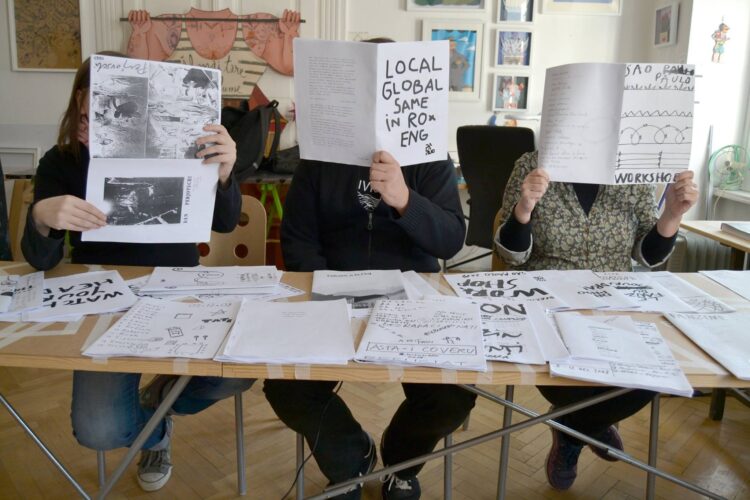
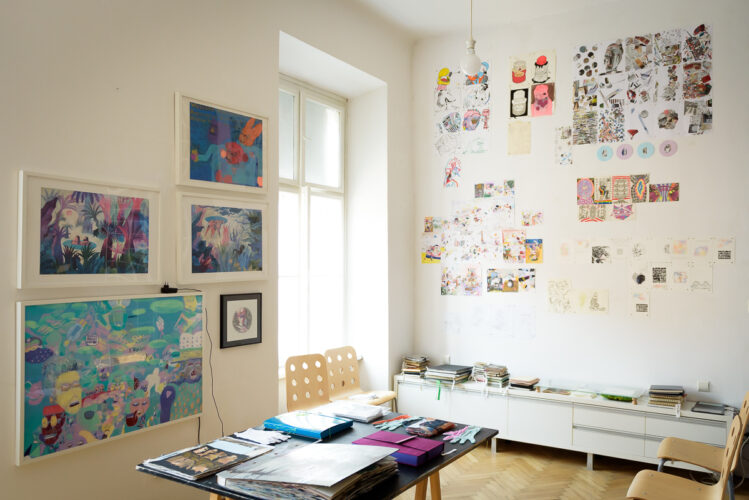
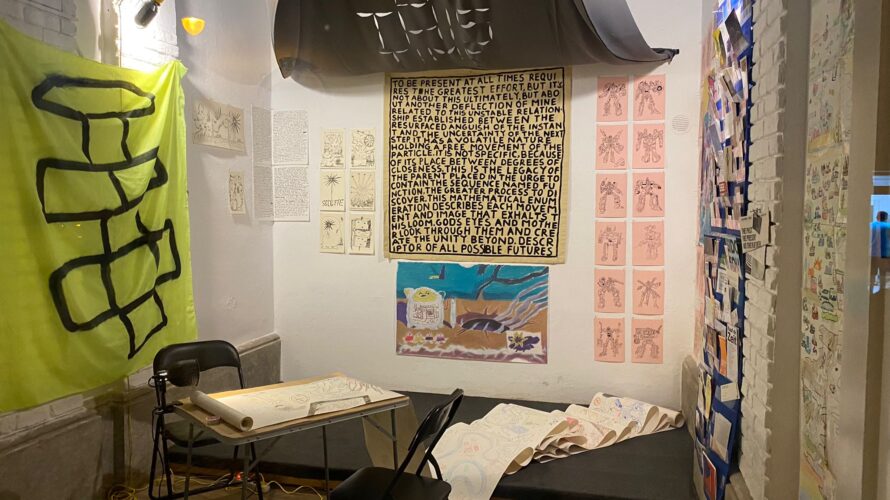
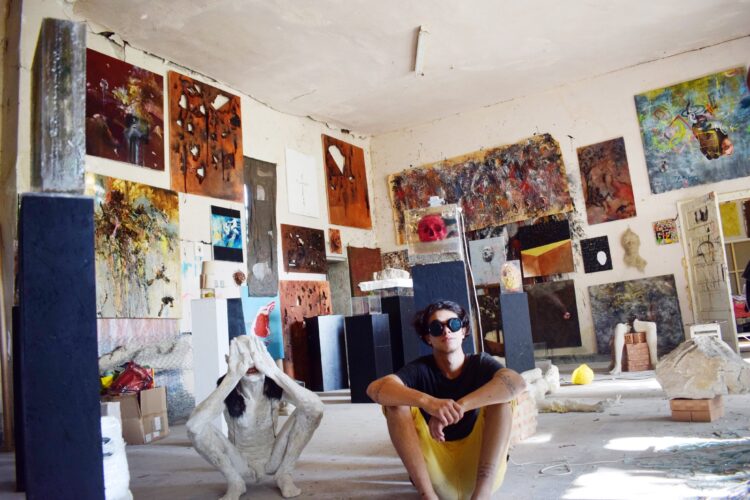
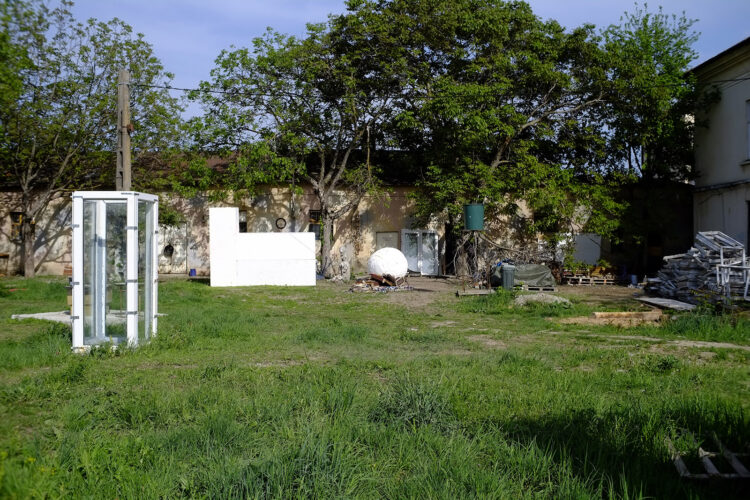
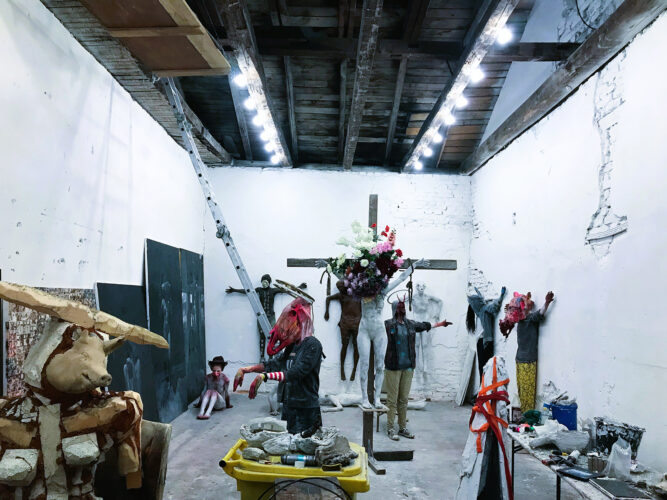
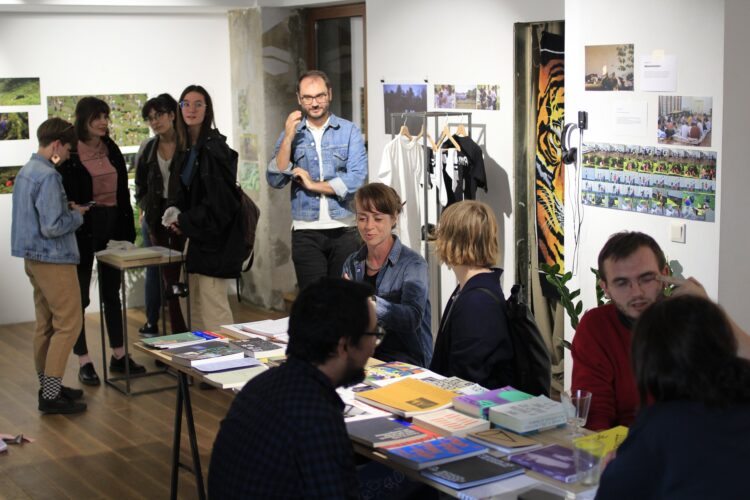


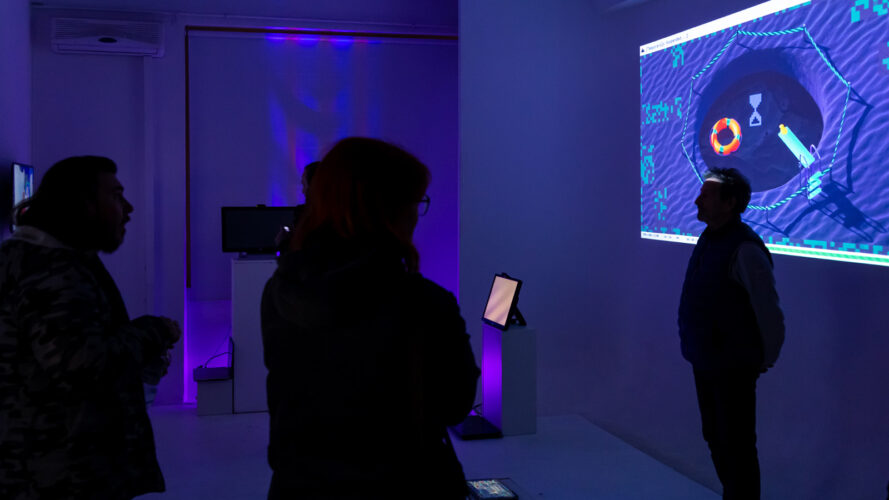
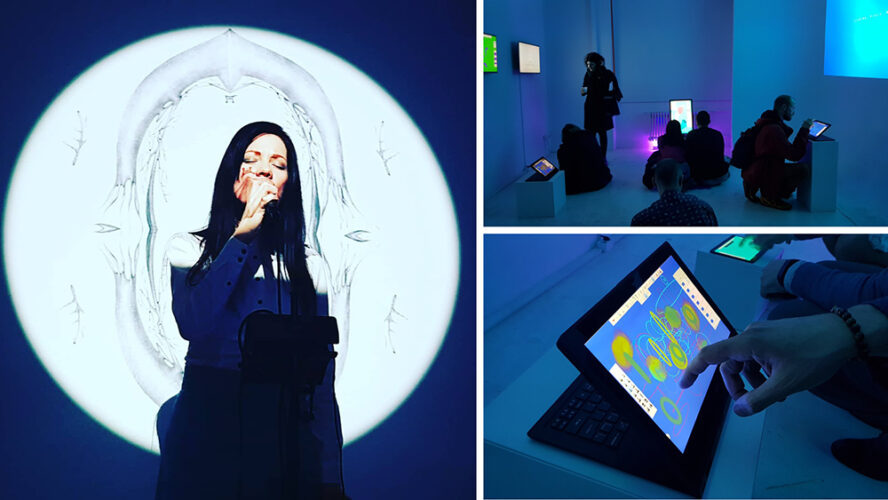
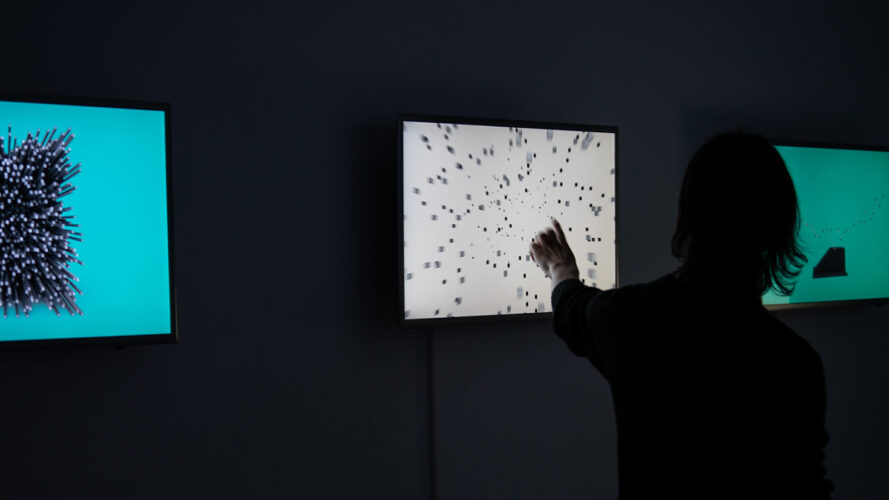
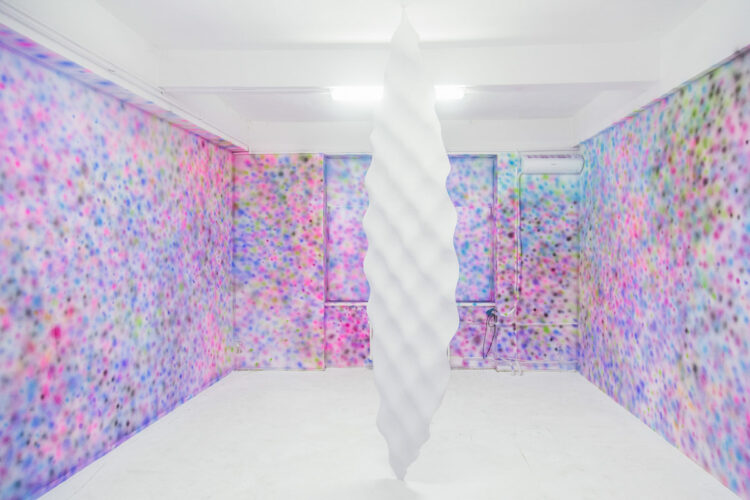


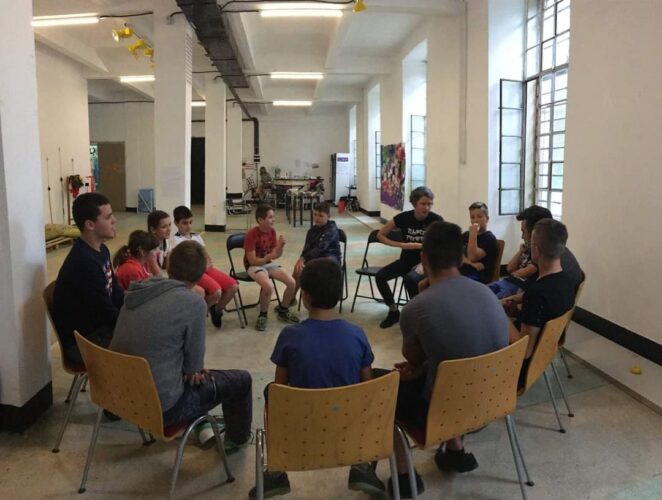
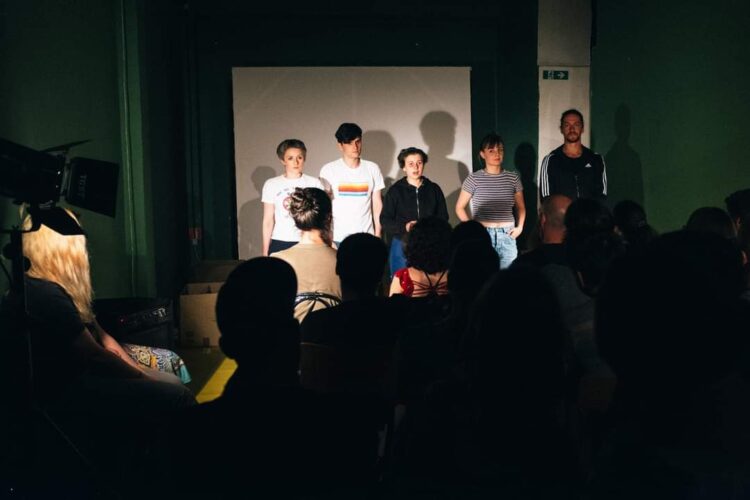
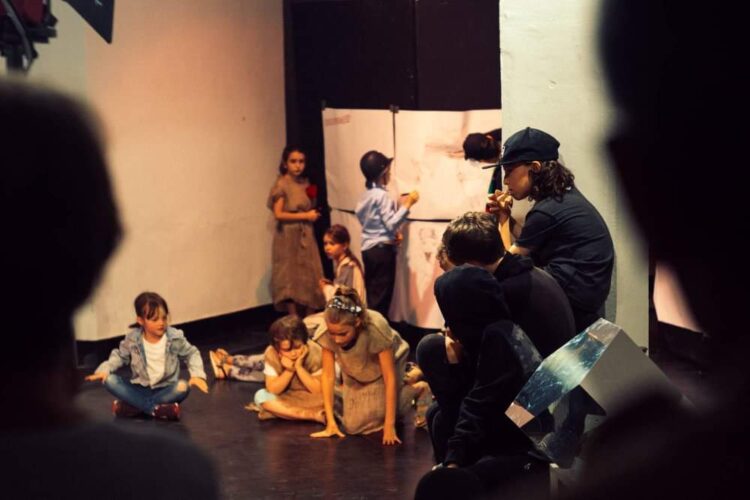
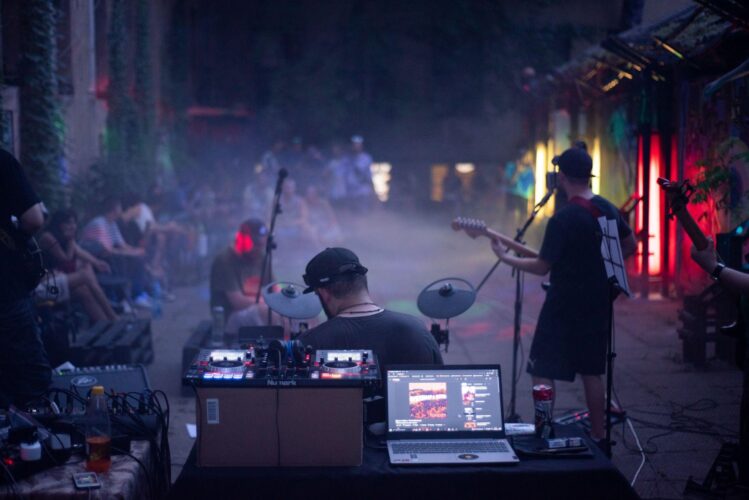
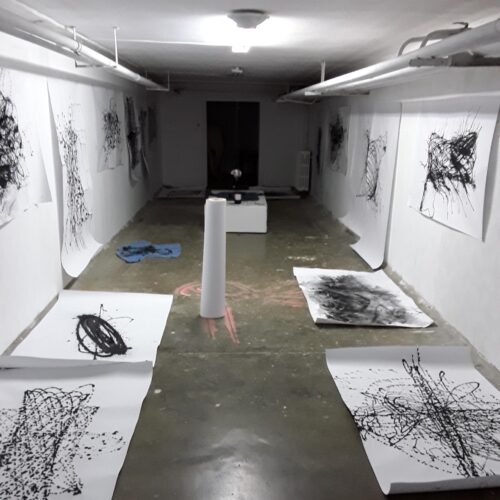
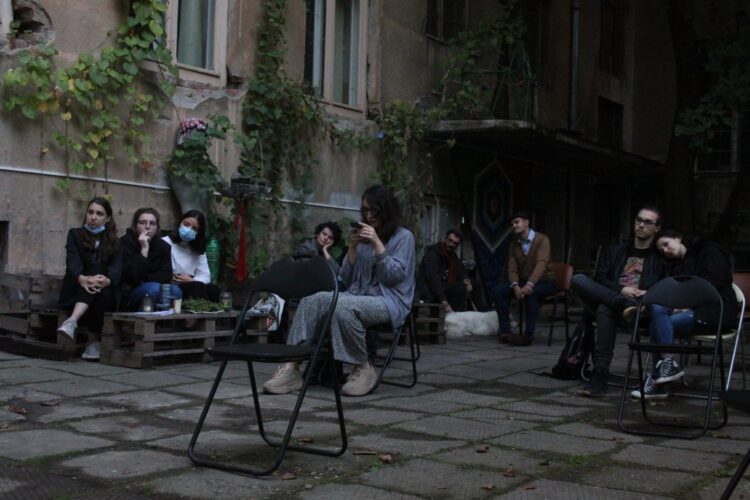
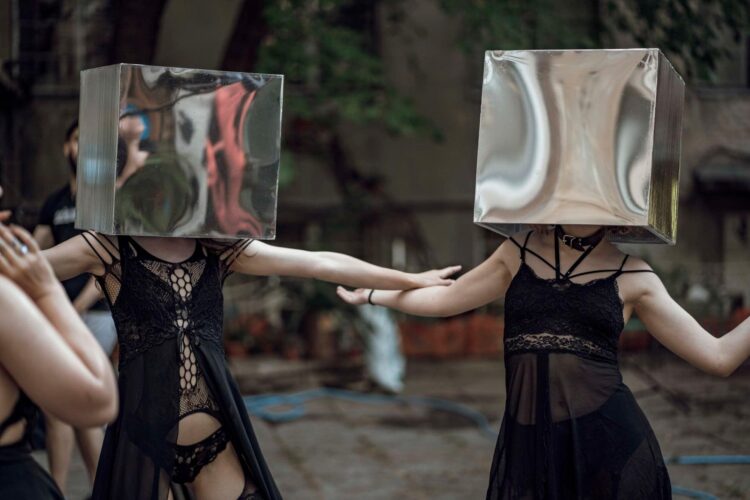
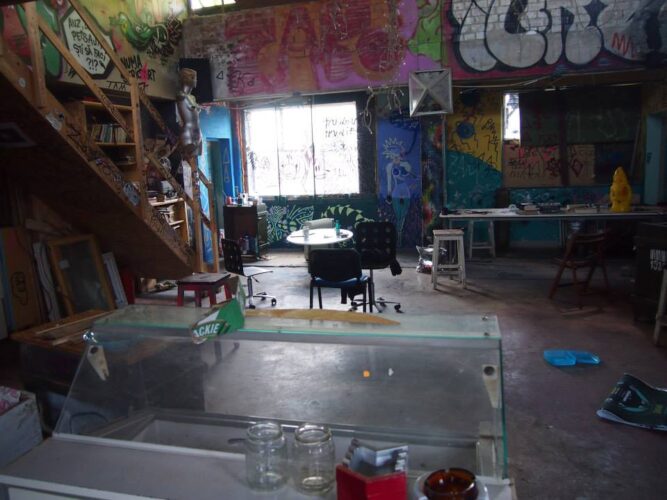
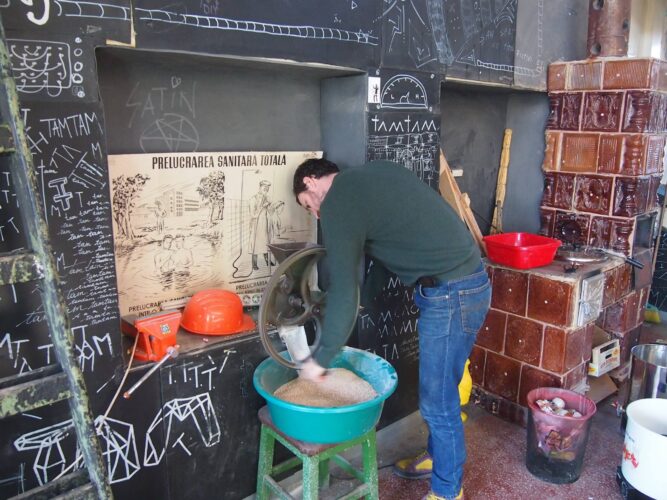
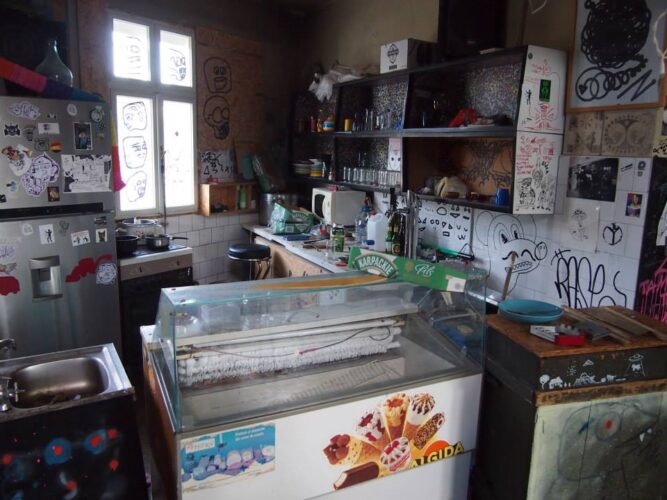


Comments are closed here.